
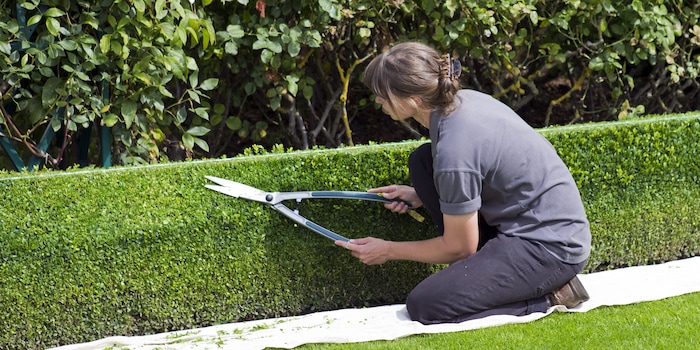
Autumn pruning in the garden
Autumn is the ideal time to prune various woody plants in the garden. Old, dead branches and leaves are removed so that the trees and shrubs sprout more beautifully and fully in spring.
Some woody plants are pruned according to clear specifications. This requires good knowledge and experience. I will explain the most important facts for correct autumn pruning in the following lines.
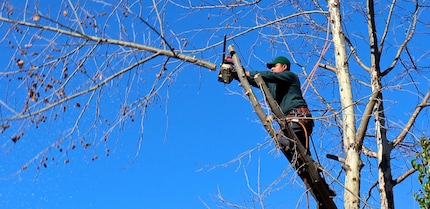
Cutting work high in the trees.
What is pruned from trees and shrubs
- Dead branches and twigs
- Thin branches that are close to the ground or directly on the tree trunk
- All diseased branches and plant parts
- Branches that have become too long and no longer fit into the picture
- Branches that get in each other's way and injure each other
As autumn is also planting season for many woody plants, I'll give you a little tip for the first planting in September and October:
Freshly planted trees and shrubs do not normally need to be pruned in autumn. Pruning should only be carried out the following year. Any exceptions are listed in the plant instructions supplied with your plant.
If there is a lot of pruning waste from branches and twigs during autumn pruning, I recommend shredding the pruning waste from the shrubs with a shredder. You can then spread it as a cover in the flower border or under the shrubs. As with compost, the following rule applies: anything that is diseased or infested with fungus should be thrown away. This will prevent the fungus or disease from spreading to other plants.
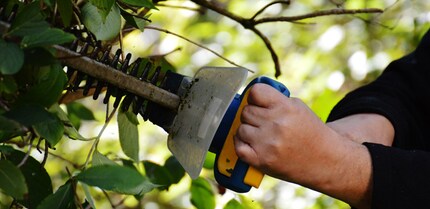
Trimming work with a hedge trimmer in a dense hedge or bush.
Which cutting tool do I need?
The right tools make autumn pruning and thinning out trees and shrubs easier. Here are the most important and most commonly used pruning tools:
- Tree or secateurs: Suitable for cutting off wilted flowers or thin branches of 1.5 - 2 cm.
- Hedge shears: For all hedges and dense shrubs
- Branch shears: For all very high-hanging branches. The long handles provide great leverage. This allows branches up to 5 cm to be cut through effortlessly.
- Tree shears with cable pull: When thinning out trees, branches in hard-to-reach places are also removed. A special pruning shear with a cable pull on an extendable pole helps here.
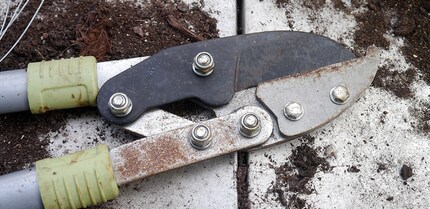
Cut back shrubs and bushes
Autumn is also the time to plant berries. When planting new plants, leave the berry plants as purchased for the first year. After that, you should cut them back regularly. Many of the soft fruit bushes tolerate autumn or winter pruning well. Some are pruned directly after the harvest. Make sure that you only cut away old or stunted wood. Pruning looks different depending on the type of berry. This is referred to as thinning pruning or rejuvenation pruning. When pruning annually, if necessary, you should not cut back into the fruiting wood. Otherwise you won't have any berries the following year.
Blackberries
Blackberries are pruned in late autumn until the beginning of winter. Make sure that you only cut out the old wood, as blackberries bear on two-year-old wood. For long, very sprawling blackberry canes, shorten the shoot tip of the continuous cane by at least a third so that the dormant side eyes on the main cane form fruiting canes in summer. Cut off last year's old berry-bearing branches directly on the thick branch, close to the new shoots. This will prevent the blackberry mite from overwintering on the old branches and infesting the young shoots in spring. Prune strong side shoots down to two buds and attach them to a trellis.
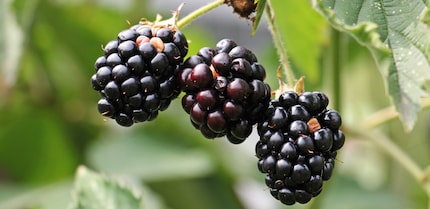
Raspberries
A distinction is made between summer and autumn raspberries. Summer raspberries are cut back immediately after harvesting. Autumn raspberries are not thinned out until winter. Bear in mind that every cut makes the bush susceptible to pathogens. First tie the newly grown shoots up with a taut wire. Then cut off the weaker canes and the canes that have borne berries close to the ground. Pathogens on the old branches are removed in this way. Depending on the size of the plant, around 8 to 10 canes will remain after pruning. As raspberries are hardy, they can survive the winter without additional frost protection.
Special autumn varieties are available commercially, which still bear berries relatively late in autumn. With this variety, you must cut off all shoots at ground level. This variety is usually sold under the name "Autumn Bliss". It is resistant to the dreaded cane disease, as the disease has no way of infecting the canes.
Roses
Most roses do not normally need pruning in autumn. This is because the plants may not have enough time to close up the damaged areas before the coming frost. In addition, the old tendrils protect the young and shorter shoots from frost damage. However, it is essential that you remove diseased or infected shoots and prune the rose back if necessary. Pruning in spring is sufficient for healthy rose plants. It is often the case that the rose shoots still freeze back a little in February. Depending on the weather, you should therefore only prune them in February or March.
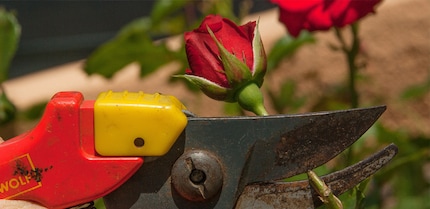
Perennial shrubs
Perennials such as delphiniums, bellflowers and lupins are pruned in summer and autumn. This also applies to many other perennials. However, some perennials can only be pruned in late autumn. It's worth reading up on this when you buy the perennial.
The first pruning is carried out after the first flowering in summer to stimulate renewed autumn flowering. The second pruning is carried out when the leaves turn yellow and the flowers start to wither. Then prune the shrubs 10 cm above the ground and remove dead leaves and branches that would otherwise rot in winter.
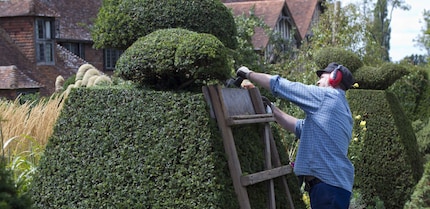
A boxwood being pruned into shape
Some tips for pruning hedges in autumn
- The last pruning for hedges takes place in October to November at the latest. However, shaping and maintenance pruning is of course possible during the summer. Just bear in mind the bird breeding season from March to September. Radical pruning should be carried out from mid-October to November.
- Make sure that the temperatures are above 5 degrees Celsius. This prevents the hedge from sprouting again and the young shoots from freezing.
- Prune in the late afternoon so that the sunlight does not dry out the cuts. Early-flowering shrubs are excluded from this. These should only be pruned in February or March.
- Bush plants and other evergreen deciduous shrubs and conifers can be pruned into the desired shape all year round. Autumn is the last time to do this before the next spring. It is better to prune several times a year than to have to do a radical pruning in autumn. If you prune several times, it is easier to maintain the desired shape.
- Densely grown hedges need to be pruned more vigorously than less compact hedges. The first step is to remove bent and broken branches and twigs. In a second step, shorten the overhanging branches. After pruning, the hedge should be wider at the bottom than at the top. This way, the leaves near the ground also receive enough light and you get a wonderfully compact shape.
Trees and hedges are pruned to maintain a beautiful shape and to support their natural growth habit. Sometimes the visual appearance or the space available plays a role, or we prune to achieve a better yield. So it's definitely worth it. Let's do it!
You might be interested in these products:


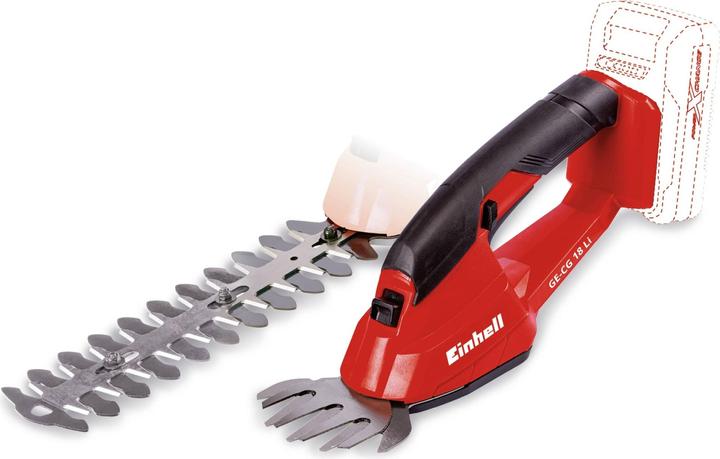
Einhell cordless grass and shrub shears
Rechargeable battery operated
I discovered my love for gardening very early on and later turned my passion into my profession. For a few years now, I’ve been regularly writing blog posts and publishing articles in the HomeGardening section of myPfadFinder.com. This is where I give readers tips and tricks on gardens and balconies and present my latest gardening videos.
Find out more about me here: <a href="http://www.andreas-homegardening.com/" target="_blank">www.andreas-homegardening.com</a>
From the latest iPhone to the return of 80s fashion. The editorial team will help you make sense of it all.
Show all